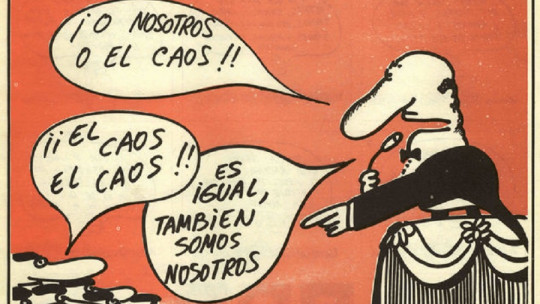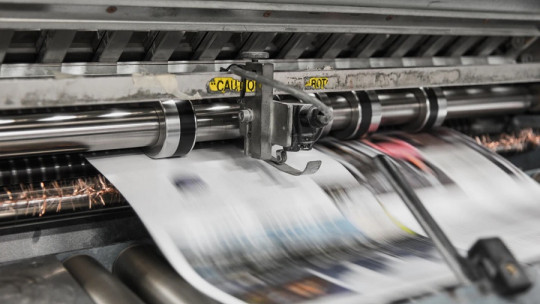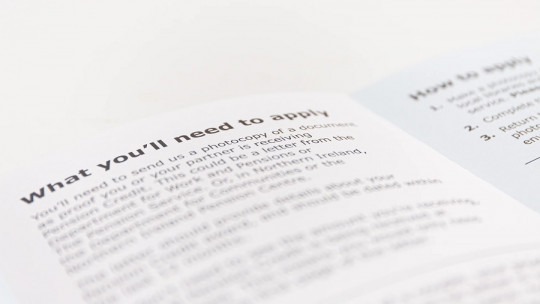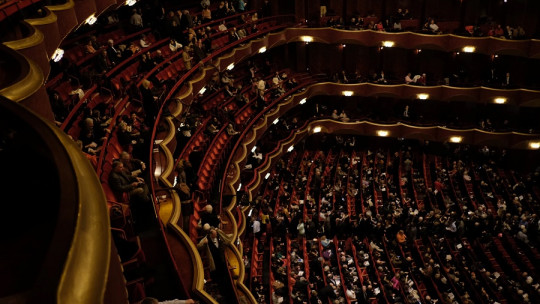
In newspapers we can find all kinds of information, both about recent events and topics of interest or about public figures.
There are several journalistic genres, types of texts in which we can classify the articles that we find in a newspaper or a magazine, both in print and online, which bring together different degrees of objectivity and to a greater or lesser extent the opinion of their author.
Next we are going to discover what the main journalistic genres are what groups they fall into and what characteristics each of them has.
The main journalistic genres
When we talk about journalistic genres we refer to the different ways in which you can communicate and inform about the same event
It is considered that genres can be grouped into three large groups: informative, opinion and interpretive or mixed. Journalistic texts are included in one or another large group depending on the degree of objectivity taken by their author or whether they express their position on a certain issue.
Originally, journalistic genres emerged from the written press, but with the development and expansion of new technologies we can find these three types of genres in the form of different texts in digital and audiovisual media These can be found in a multitude of texts of different formats. Let’s discover them.
Informative genres
Informative genres are characterized by exposing events based on specific data. The author must try to transmit the information as objectively as possible. Within this great journalistic genre we mainly find the news, the report and the interview.
1. The news
The news is an article that reports on a recent, current and interesting event This genre is considered the most important and representative of the informative genre, and it can be said that without news journalism would have no meaning. Its content is very varied, and can cover topics related to politics, the economy, society, culture, the world of sports…
There are two characteristics that allow us to differentiate the news from other journalistic genres: brevity and objectivity. The objective of the news is none other than to report on an event, without adding any type of analysis or comment that suggests what position the author takes on the matter. The writing of a news story must be adjusted as accurately as possible to the events that occurred.
When writing a news item, you should avoid using adjectives that denote subjectivity, especially prefixes, personal pronouns or first-person verbs. In general, short, clear and simple sentences should be used.
The usual structure of the news is an inverted pyramid, in the sense that this type of text uses the journalistic story technique, starting with what is most important and concluding with what is less important. The following elements can be included in this journalistic genre.
The headline must use a font that stands out from the rest of the news, usually using bold and a larger font size. Verbal ellipsis (omitting verbs) predominates in them. With it the main fact that the news is about is expressed.
The introduction is the first paragraph of the news, which contains the main part of the informative body, but not necessarily a summary. It must be complete and autonomous enough so that the reader, when reading it, gets an idea of the fundamentals of the news. It is in this part where you can find the answers to the classic questions of what, who, how, where, when and why.
The body of the news is the news itself, appearing in smaller font than the headline and the intro. It is presented divided into paragraphs in which the information expressed in the opening is developed in more detail, including background information, consequences of what happened and the current situation of the issue addressed in the news. The comments of those involved appear in indirect speech and also in direct speech between quotation marks.
2. The report
The reports are basically extended news in which detailed information is offered about an event, analyzing its circumstances, antecedents and consequences, and the opinions of those involved (witnesses and protagonists) are collected.
They may include the reporter’s opinions or evaluations, which gives the information a somewhat more subjective nature, which is why some consider it a mixed genre.
3. The interview
The interview is the journalistic genre in which the conversation that the reporter has with a prominent person is reproduced verbatim Its two most common modalities are:

Genres of opinion
As its name suggests, opinion genres are those types of articles where subjectivity predominates. The journalist, the editor or the specialist shows his point of view on a fact or event. They are also used to express the position of a media outlet regarding a phenomenon or news of interest.
This genre includes formats such as the editorial, the column, the criticism, the letter to the editor and the opinion article. The comic strip or vignette that many newspapers add to their pages to express a topic of interest in a humorous and sarcastic way can also be considered part of the opinion genre, often being a resource where the author expresses his opinion graphically.
The linguistic characteristics of opinion texts are close to those of humanistic discourse or essay so it is common to see the following features in them:
- Presence of the sender in the text, using the first person.
- Use of expressive resources that embellish the style.
- Contribution of examples, anecdotes and quotes.
- Use of argumentation.
4. The publisher
In the publishing house expresses the newspaper’s point of view on a current topic and usually appears in a prominent place in the publication, fixed and almost always unsigned. In most cases, these texts are written by the newspaper’s director himself.
It is an expository-argumentative text, in which the newspaper aims to make known its vision and assessment of current events that condition public opinion. The seriousness of the presentation invites the reader to know what the newspaper thinks and, in addition, tries to convince him to, at least, take a reflective attitude.
On the other hand, In the editorial texts the ideological line that the newspaper has can be openly shown, expressed using very subjective language, with features typical of argumentative texts. It should also be said that the first person singular is not usually used nor are humorous turns added, more typical of other opinion texts.
- You may be interested: “What is ideology?”
5. The opinion article
Unlike the editorial, the opinion article is always signed It defends opinions or points of view that do not have to fully coincide with those of the newspaper.
These texts consist of a critical reflection on current issues that the writer judges and values, with a mark of subjectivity, but expressing it using the properly journalistic style expected of a media worker.
6. The column
The column is a special type of opinion piece. This text maintains the same general features, but is characterized by its brevity and its periodic nature They are called that because their way of being presented is elongated and they are texts whose own style is very particular, almost literary.
7. The letter to the editor
The letter to the editor is a type of text in which the readers of a certain publication give their opinion about a fact explained in it These are short texts, normally delimited by the newspaper in which they will be published and can deal with different topics such as current events, complaints, personal experiences, tributes, opinions. Whether they are published or not is the will of the newspaper’s director.
Interpretive or mixed genres
Interpretive genres are mixed genres, since in them we can find characteristics of informative texts along with opinion texts. It is characterized by describing a fact, but including at the end the personal assessment of the editor or journalist The most characteristic type of text among the interpretive genres is the chronicle par excellence, along with the interpretive interview and report.
8. The chronicle
The chronicle is the type of text in which a subjective interpretation is offered of events that occurred on a day that the journalist evaluates and interprets, although antecedents and consequences of those same events are also usually sought. The event is told from the place where it happened and in a chronological manner.
This journalistic genre It differs from reportage by the fact that the journalist is at the event, and follows a temporal sequence while both the event itself and its consequences occur. It differs from the news in the fact that its author does evaluate the events, giving his opinion. It is usually prepared by a correspondent or special envoy, approaching literary narration.
9. Criticism
In the criticism the author informs and values some type of artistic or cultural activity such as a film, a theatrical performance, a concert… These types of texts usually appear the day after premieres, presentations or celebrations.








